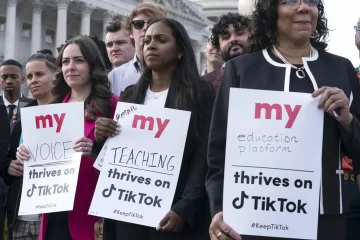American voters going to the polls on 6 November will cast ballots for candidates to the United States Congress, their own state legislatures, and a host of local ballot initiatives. In 36 states, they will also be voting in gubernatorial elections. The results of these elections, perhaps even more than the Congressional elections, will foreshadow the direction of American politics into the 2020 presidential election and onward into the next decade.
The federalist system of the United States gives state governments a significant amount of control. The reserved powers clause in the 10th Amendment of the Constitution grants the states all powers “not delegated to the United States by the Constitution.” In practice this gives states and their governors considerable leeway when crafting policy.
Many of the primary issues of contemporary American politics fall under the realm of state policy. While the Constitution guarantees the right to bear arms through the Second Amendment, states have the freedom to impose restrictions on firearm ownership. Primary school curricula are largely driven by state legislatures. States have the power to enact their own laws regarding marriage and abortion, as long as they do not fully restrict access to same-sex marriage and abortion as guaranteed by decisions of the Supreme Court.
State governors also have the responsibility for enacting and enforcing state ballot initiatives. In 2012 Colorado became the first state to legalise recreational cannabis through a popular initiative. Since then, nine states (and the District of Columbia) have legalised recreational cannabis. Governor John Hickenlooper supported the initiative, calling it “one of the great social experiment in the first half of this century.”
Governors can also work against popular initiatives within their own state. In 2016, Maine voters approved a measure to install ranked-choice voting in place of the then-current plurality system. Ranked choice voting allows voters to rank their candidates in order of preference, rather than vote for an individual candidate. Maine Governor Paul LePage called the measure “the most horrific thing in the world,” and stonewalled the motion in the state legislature. A second referendum in June forced Mr. LePage to install the measure.
States can also spearhead opposition movements to federal initiatives. The state of California has filed forty-four lawsuits against President Trump and the federal government. The state of New York has sued the federal government multiple times in 2018 over issues including tax legislation and Mr. Trump’s child separation policy. Mr. Trump can expect continued resistance from these states in the next two years; Democratic incumbent Andrew Cuomo leads Republican challenger Marc Molinaro by 22 points, according to a poll conducted by Siena College, and recent polls in California give the Democrat Gavin Newsom an 11-point lead over GOP candidate John Cox.
Other states remain too close to call. The Florida gubernatorial election pits Congressman Ron De Santis, an ardent Trump supporter, against Andrew Gillum, the progressive mayor of Tallahassee. The race has been characterized by verbal sparring, with Mr. De Santis accusing his opponent of corruption and Mr. Gillum suggesting that Mr. De Santis’ voters believe him to be racist. FiveThirtyEight, a political analysis website, gives Mr. Gillum a 7-in-9 chance of winning the election.
Just one state further north, another gubernatorial election is mired in controversy. Under the watch of Secretary of State Brian Kemp — who also happens to the be the Republican candidate for governor — the registration of 50,000 majority-black voters has stalled. His opponent Stacey Abrams, seeking to become the first black female governor of the state, has decried his tactics as “voter suppression.” FiveThirtyEight’s model rates the race as a toss-up.
Also of interest for political analysts is the performance of the Midwest. The states of the former Rust Belt largely went for Mr. Trump in 2016, but the polls suggest the states might be turning blue. Local news outlet PennLive called the Pennsylvania governor race a “snoozer;” polls suggest that Democrat Tom Wolf will defeat Republican candidate Scott Wagner (no relation to your correspondent) by double-digits. A recent poll conducted by Detroit News gives Democrat Gretchen Whitmer a 12-point lead over GOP candidate Bill Schuette in Michigan. In Illinois, Democratic candidate J.B. Pritzker has an even larger advantage; RealClearPolitics’ aggregate poll puts Pritzker 15 points up on the incumbent, Governor Bruce Rauner. Races in Wisconsin and Ohio, which both went for Mr. Trump in 2016, remain toss-ups in the polls.
State governors have the power to influence a wide range of policy issues that affect American voters. This election, however, may be more important for issues of politics rather than policy. Of the thirty-six states holding gubernatorial elections, twenty-three are currently occupied by Republican governors.
The state of the gubernatorial races stands in stark contrast to this year’s Senate elections, where the Democrats are defending twenty-six of the thirty-five seats up for election. Where the Senate may prove difficult to capture, poll numbers suggesting a blue wave in 2018 could net decisive gains among state legislatures.
The timing could not be better for the Democrats. Governors elected in 2018 will be in office for the redrawing of congressional districts in 2020. A wave of Republican successes in 2010 helped the GOP gerrymander the redrawn districts in their favour–to the tune of eighteen Congressional seats, according to Christopher Ingraham of the Washington Post. A run of successes in the 2018 gubernatorial elections could give Democrats a similar advantage when the districts are redrawn in two years.
The results of the 2018 Congressional elections will impact the state of American politics during the remainder of Mr. Trump’s presidential term. The gubernatorial races, however, will foreshadow the direction of American politics through the next ten years. If the “blue wave” projected by political pundits proves accurate, the 2018 midterms may prove a landmark victory for the Democratic Party.


